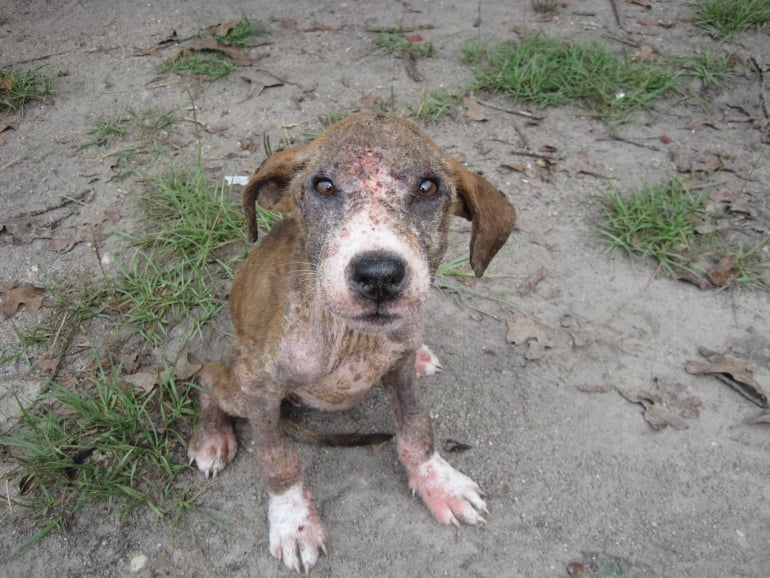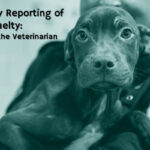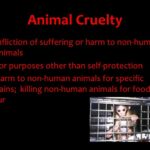In the complex tapestry of human behavior, the relationship between childhood trauma and the abuse of animals emerges as a poignant narrative. This phenomenon evokes a duality reminiscent of a dark fairy tale, where the innocent transforms into the aggressor, hinting at deep-seated emotional currents that weave through the lives of both humans and animals. This reflection prompts an exploration of whether, indeed, abused children possess a proclivity to inflict harm upon animals, thereby challenging societal notions of innocence and responsibility.
The notion that a child who has suffered can reciprocate that suffering onto the most vulnerable beings around them is both alarming and essential for understanding the cycle of violence. Sociological and psychological studies consistently reveal a disturbing correlation between child abuse and animal cruelty. Children exposed to violence, neglect, or emotional distress often grapple with intense feelings of helplessness. In such tumultuous environments, where power dynamics are skewed, children may seek to regain a semblance of control by asserting dominance over the innocent creatures that dwell within their immediate environments.
This behavior serves as a metaphorical mirror reflecting their own anguish, as they, too, are trapped within a system that validates aggression as a means of expression. Just as a tempestuous storm wreaks havoc on its surroundings, exacerbating damage as it rages on, these children may lash out, seeking catharsis through the suffering of an animal. In their minds, the act of cruelty may offer a temporary escape, a perverse sense of agency that eludes them in their interactions with the adults who wield power over their lives.
Research in the field of psychology explicates the concept of displacement—a phenomenon wherein individuals redirect their feelings of frustration or anxiety onto a safer target. For a child enduring the tumult of a chaotic household, an animal represents a convenient outlet. The lack of emotional regulation and learned behavior patterns can create a predisposition to replicate the dynamics of power and subjugation they have experienced. Thus, the animal, often seen as a mute witness to their trials, becomes an unwilling participant in their narrative of pain.
Yet, while the cycle is deeply rooted, it is essential to tread lightly and not amalgamate all victims into one villainous archetype. The interplay of human experience is infinitely complex; not every child who suffers abuse will turn to animal cruelty. Indeed, some may, through their experiences, cultivate an affinity for animals, viewing them as kindred spirits in their shared vulnerability. It is crucial to recognize that empathy can flourish in the most adverse conditions, serving as a protective factor against repeating the cycle of violence.
To further understand the dynamics at play, consider the role of social learning theory, which posits that behaviors are acquired through observation and imitation. In households where there is a pervasive culture of violence, children may internalize these behaviors as normative. The presence of violent role models can engender a belief that dominance over others is an acceptable form of interaction. Thus, when these children encounter animals—often deemed as lesser beings in their eyes—they may replicate the aggressive behaviors they have witnessed, perpetuating the cycle of cruelty.
Moreover, the impulse to project inner turmoil onto defenseless creatures is not merely the realm of predisposition; it is also exacerbated by societal factors. Environmental influences, including peer dynamics and community standards, can either condone or condemn acts of cruelty. In communities where compassion for animals is celebrated, children might instead channel their frustrations into protective behaviors. Conversely, in settings where aggression is lauded, children may feel emboldened to act out, confirming their learned behaviors and yielding to peer pressure.
Understanding the motivations behind such behavior presents a critical challenge for society. While retribution against the perpetrators of animal cruelty may provide immediate satisfaction, it often fails to address the underlying psychological scars afflicting these children. Interventions that target the root causes of abuse, foster emotional intelligence, and encourage the formation of positive relationships with animals could prove invaluable. Through rehabilitation and education, it is possible to course-correct these trajectories, breaking the cycle of violence and nurturing future generations who view animals as companions rather than victims.
Moreover, animal advocates must shine a light on the interconnection between at-risk youth and animal welfare. Initiatives that facilitate meaningful interactions between children and animals could serve as powerful therapeutic interventions. Animal-assisted therapy and programs that educate children about empathy and responsibility towards pets can redirect emotional turmoil into constructive outlets. By witnessing the resilience and unconditional love that animals offer, these children may find pathways to heal their own wounds.
Ultimately, addressing the question of whether abused children really harm animals reveals a broader societal dilemma: how we understand and respond to both abuse and empathy. By unpacking the complexities of this relationship, we can foster deeper awareness and cultivate both individual and collective responsibility towards those who have suffered—whether they be children or animals. It is imperative to recognize that cruelty does not emerge in a vacuum; rather, it is a symptom of a fractured ecosystem, one that demands our attention and intervention. Only through comprehensive understanding and proactive efforts can we hope to forge a future where compassion triumphs over cruelty, healing resonates louder than pain, and every being—human or animal—can flourish in an environment infused with love and respect.








